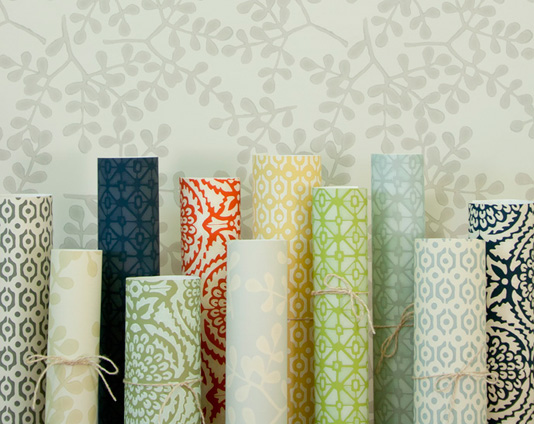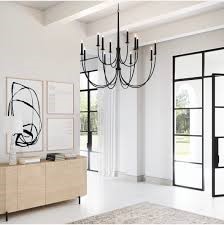Ordinary wallpaper is paper with a pattern printed on it. The paper surface may be smooth, or it may be embossed to various depths, either in register with the printed design or to give the paper an overall surface texture. There is an enormous range of designs available more than for any other type of wallcovering. It is sold in rolls of a standard size, measuring about 10m long and 530mm wide.
Washable wallpapers are generally less easy to hang than ordinary papers, because they lend to curl up at the edges, and as the base paper is often relatively thin they may tear easily if roughly handled. They are better at resisting stains and scuffs than ordinary wallpapers, and can be scrubbed (gently) instead of just sponged. They lend to lift at the edges in steamy rooms, but perhaps the biggest drawback of most washable wallpapers is that they are very difficult to strip once hung. However, they do provide a relatively cheap way of covering walls that need regular wiping children’s bedrooms, bathrooms and cloakrooms, for example and the choice of designs available reflects this intended use. A few are ready-pasted.
Paper-backed vinyls consist of a plastic film (usually of polyvinyl chloride, hence the name, although other plastics are sometimes used) into which the printed design is fused, and a paper backing. The surface of the vinyl layer may be smooth or embossed with a variety of textures which may be randomly arranged or in register with the printed design. The range of designs available is very large, and there is also considerable variation in the weight of the paper backing. Rolls of paper-backed vinyls are standard-sized and many brands are available ready-pasted.
Ordinary flocks need great care in hanging, since paste will mark the Hocked areas, and the surface can easily be damaged by scull’s and knocks. Vinyl flocks are easier to hang (although paste marks should still be avoided if possible). Once hung, ordinary flocks can be sponged to remove marks, while vinyl flocks can be washed more vigorously (or even scrubbed, depending on the brand). In both cases, however, the pile may become matted or flattened. Both types need brushing lightly from time to time to keep the pile free from dust. Vinyl flocks are easy to strip for re-decoration, with the vinyl layer separating from its backing as for paper-backed vinyls; ordinary flocks are more difficult to remove. Both types are expensive.
Foil wallcoverings consist of a metallised plastic film on a paper backing. They may come in a single colour gold, silver, copper or even bright pop-art or they may be overprinted with a design fused intothe plastic film. Some foil wallcoverings will conduct electricity and must not be hung where they could come into contact with electric wiring – behind light switches and power points, for example. Most brands are sold in standard-sized rolls, although some come in non- I standard lengths. Some brands are ready-pasted.

Metallised foils are not particularly easy to hang, especially if heavily embossed: hanging them on uneven walls will tend to highlight the bumps. They are either washable or scrubbable (but over-vigorous rubbing may spoil the surface effect) and they resist stains and marks well. Metallised foils can be used in humid environments, but stripping may pose problems, since the protective plastic film and the foil may separate.
Relief wallcoverings include a number of products with one common characteristic – they have a three-dimensional surface with either a regular or a random pattern that is intended for painting once hung. Most are part of the family of whiles that also includes woodchip paper and lining papers. There are four main types, of which the most widely known is an embossed paper with a relatively low surface relief. Another type, which is more deeply embossed, is made from cotton linters instead of wood pulp. Vinyl reliefs are paper-backed vinyls with a deeply embossed solid vinyl surface layer, while blown relief wallcoverings have a surface with a spongy texture reminiscent of expanded foam plastic, again on a flat paper backing.
Woodchip papers are part of the whites family. They are thick pulpy wallpapers into which small chips of wood have been mixed during manufacture to give a wall covering with a surface texture rather like coarse oatmeal. Coarse, medium and fine grades are available, the texture varying with the size of the wood chips. They are intended for painting over once hung.
Lining paper is a plain wallpaper that is used on walls and ceilings to provide a uniform, even surface over which other wallcoverings can be hung. Double and triple length rolls are available. It is usually hung horizontally. A special grade called finished extra white is intended for painting over – useful as a way of rehabilitating badly cracked but otherwise sound walls where you do not want the textured or patterned surface that wood-chip or other relief wallcoverings would provide. Lining paper usually comes in rolls 10m long and 560mm wide and, except for the very thin grades of paper, is relatively easy to hang.
Fabric wallcoverings are often hung by pasting the wall, not the wallcovering, and great care must be taken not to get paste on the fabric. Joints may have to be overlapped and then trimmed follow the manufacturer’s instructions. They tend to mark easily but can be cleaned -with dry-cleaning solvents rather than soap or detergent. Stripping is generally fairly easy – the fabric can usually be peeled away from the paper backing.
Foamed polyethylene wallcovering has no paper the pattern is fused into the surface of the plastic, and the surface is lightly textured to give it a soft, warm feel. It is extremely light, and is hung by pasting the wall, not the wallcovering. Care must be taken not to score or stretch the material as it is hung and to ensure the edges are well stuck down. The surface resists stains fairly well, and can be washed, but not scrubbed. However, the edges tend tolift slightly in hot humid conditions. It is very easy to strip – it simply peels off the wall in one layer. It is broadly comparable in price with paper-backed vinyls, but easier to hang and not so durable. Foamed polyethylene wallcovering is sold under the brand name Novamura.
Discover more from Personal Blog of Richard Tong
Subscribe to get the latest posts sent to your email.




